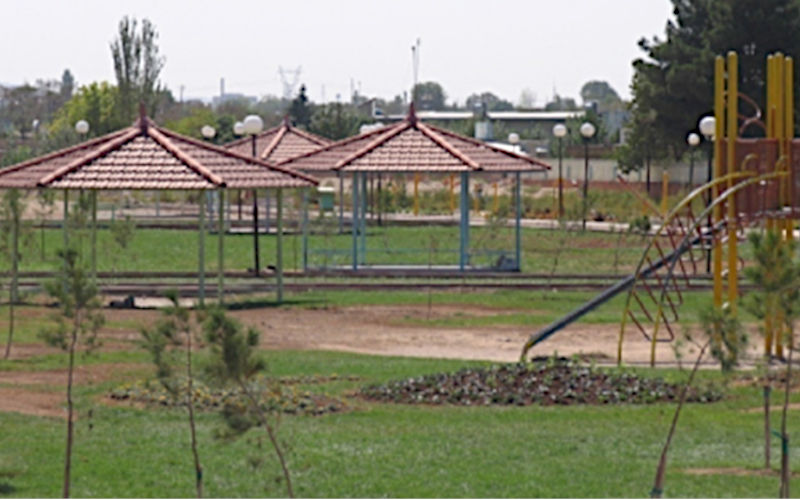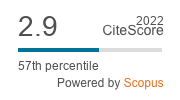Public Perception and Perceived Landscape Function of Urban Park Trees in Tabriz, Iran
DOI:
https://doi.org/10.3097/LO.201862Keywords:
Landscape Function, Landscape Assessment, Landscape Benefits, Photo-questionnaire Design, Urban ForestryAbstract
Landscapes of parks may contribute an important function in the urban park with a wide range of benefits. However, there is a lack of understanding of the publics‘ preferences for parks‘ landscape funtions and benefits in middle-east countries such as Iran. About 275 park users were interviewed using photo-questionnaire in Tabriz, Iran using five point Likert scale (1 = strongly disagree,.. 5 = strongly agree) for measuring their preference level. Descriptive analysis, factor analysis, and variance analysis (Independent sample t-test and ANOVA) were used for analyzing the data. The results revealed the majority of the participants were male (54.5%), single (65.09%), highly educated (71.4%), below 40 years old (62.9%), and visit the park with family members (43.3%) in the evenings (54.5%). The participants preferred the presence of Salix alba followed by Pinus nigra, Platanus occidentalis, and Morus alba in the urban park, respectively. “Flowering purpose“ (mean= 4.21) and “green enlargement“ (mean= 4.20) were important functional dimensions, whilst, “health care“ (mean= 4.33) and “mental recovery“ (mean= 4.29) landscape benefits in urban parks. It is concluded that, perhaps, attributions of trees such as creating shade, with the canopy on top, and having large leaves are significant factors on publics‘ landscape preferences.
References
Ahmad, H., Maulan, S. B., Mariapan, M., & Habib, S. (2011). Users' preferences of usability and sustainability of old urban park in tabriz, iran. Australian Journal of Basic and Applied Sciences, 5(11), 1899-1905.
Ahmad, H., Maulan, S. B., Mariapan, M., & Muhammad, M. (2014). The relationship between landscape planting patterns and perceived safety in urban parks in tabriz, iran. African Journal of Environmental Science and Technology, 8(2), 107-113.
Bjerke, T., Østdahl, T., Thrane, C., & Strumse, E. (2006). Vegetation density of urban parks and perceived appropriateness for recreation. Urban Forestry and Urban Greening, 5(1), 35-44. doi:10.1016/j.ufug.2006.01.006
Botzat, A., Fischer, L. K., & Kowarik, I. (2016). Unexploited opportunities in understanding liveable and biodiverse cities. A review on urban biodiversity perception and valuation. Global Environmental Change, 39, 220-233. doi:10.1016/j.gloenvcha.2016.04.008
Chen, B., Adimo, O. A., & Bao, Z. (2009). Assessment of aesthetic quality and multiple functions of urban green space from the users' perspective: The case of hangzhou flower garden, china. Landscape and Urban Planning, 93(1), 76-82. doi:10.1016/j.landurbplan.2009.06.001
Daniel, T. C. (2001). Whither scenic beauty? visual landscape quality assessment in the 21st century. Landscape and Urban Planning, 54(1-4), 267-281. doi:10.1016/S0169-2046(01)00141-4
De Vaus, D. (2002). Social Survey (I),
Dupont, L., Antrop, M., & Van Eetvelde, V. (2015). Does landscape related expertise influence the visual perception of landscape photographs? implications for participatory landscape planning and management. Landscape and Urban Planning, 141, 68-77. doi:10.1016/j.landurbplan.2015.05.003
Hami, A. (2009). Users' Preferences of Usability of Urban Parks in Tabriz,
Hami, A., Fazilah Fazle, M., Sayyah, Z., & Emami, F. (2016). Factors affecting people preferences toward environment landscape, case study: Shopping mall in kuala lumpur. J.Curr.Res.Sci., 4(2), 216-225.
Hami, A., Suhardi, M., Manohar, M., & Malekizadeh, M. (2014). Natural elements spatial configuration and content usage in urban park. Int.J.Architect.Eng.Urban Plann., 1(24), 15-23.
Hami, A., & Tarashkar, M. (2018). Assessment of women's familiarity perceptions and preferences in terms of plants origins in the urban parks of tabriz, iran. Urban Forestry and Urban Greening, 32, 168-176. doi:10.1016/j.ufug.2018.04.002
Helfand, G. E., Sik Park, J., Nassauer, J. I., & Kosek, S. (2006). The economics of native plants in residential landscape designs. Landscape and Urban Planning, 78(3), 229-240. doi:10.1016/j.landurbplan.2005.08.001
Holtan, M. T., Dieterlen, S. L., & Sullivan, W. C. (2015). Social life under cover: Tree canopy and social capital in baltimore, maryland. Environment and Behavior, 47(5), 502-525. doi:10.1177/0013916513518064
Jiang, B., Chang, C. -., & Sullivan, W. C. (2014). A dose of nature: Tree cover, stress reduction, and gender differences. Landscape and Urban Planning, 132, 26-36. doi:10.1016/j.landurbplan.2014.08.005
Kaplan, R. (1992). The psychological benefits of nearby nature. The Role of Horticulture in Human Well-being and Social Development: A National Symposium, , 125-133.
Kaźmierczak, A. (2013). The contribution of local parks to neighbourhood social ties. Landscape and Urban Planning, 109(1), 31-44. doi:10.1016/j.landurbplan.2012.05.007
Keniger, L. E., Gaston, K. J., Irvine, K. N., & Fuller, R. A. (2013). What are the benefits of interacting with nature? International Journal of Environmental Research and Public Health, 10(3), 913-935. doi:10.3390/ijerph10030913
Kirkpatrick, J. B., Davison, A., & Daniels, G. D. (2012). Resident attitudes towards trees influence the planting and removal of different types of trees in eastern australian cities. Landscape and Urban Planning, 107(2), 147-158. doi:10.1016/j.landurbplan.2012.05.015
Lohr, V. I., & Pearson-Mims, C. H. (2002). Childhood contact with nature influences adult attitudes and actions towards trees and gardening. International Interaction by Design: Bringing People and Plants Together for Health and Well-being: An International Symposium, , 267-277.
Lohr, V. I., & Pearson-Mims, C. H. (2006). Responses to scenes with spreading, rounded, and conical tree forms. Environment and Behavior, 38(5), 667-688. doi:10.1177/0013916506287355
López-Martínez, F. (2017). Visual landscape preferences in mediterranean areas and their socio-demographic influences. Ecological Engineering, 104, 205-215. doi:10.1016/j.ecoleng.2017.04.036
Maas, J., Verheij, R. A., De Vries, S., Spreeuwenberg, P., Schellevis, F. G., & Groenewegen, P. P. (2009). Morbidity is related to a green living environment. Journal of Epidemiology and Community Health, 63(12), 967-973. doi:10.1136/jech.2008.079038
Majnonian, H. (1996). Parks, Green Spaces, and Promenades,
Mitchell, R., & Popham, F. (2008). Effect of exposure to natural environment on health inequalities: An observational population study. The Lancet, 372(9650), 1655-1660. doi:10.1016/S0140-6736(08)61689-X
Mitra, A., & Lankford, S. (1999). Research methods in park, recreation, and leisure services. Research Methods in Park, Recreation and Leisure Services,
Muratet, A., Pellegrini, P., Dufour, A. -., Arrif, T., & Chiron, F. (2015). Perception and knowledge of plant diversity among urban park users. Landscape and Urban Planning, 137, 95-106. doi:10.1016/j.landurbplan.2015.01.003
Nasar, J., & Lin, Y. -. (2003). Evaluative responses to five kinds of water features. Landscape Research, 28(4), 441-450. doi:10.1080/0142639032000150167
Nilsson, K., Sangster, M., Gallis, C., Hartig, T., Vries, S., Seeland, K., & Schipperijn, J. (2011). Forests, trees and human health. Forests, trees and human health (pp. 1-427) doi:10.1007/978-90-481-9806-1
Oguz, D. (2000). User surveys of ankara's urban parks. Landscape and Urban Planning, 52(2-3), 165-171. doi:10.1016/S0169-2046(00)00130-4
Peterson, M. N., Thurmond, B., McHale, M., Rodriguez, S., Bondell, H. D., & Cook, M. (2012). Predicting native plant landscaping preferences in urban areas. Sustainable Cities and Society, 5(1), 70-76. doi:10.1016/j.scs.2012.05.007
Polat, A. T., & Akay, A. (2015). Relationships between the visual preferences of urban recreation area users and various landscape design elements. Urban Forestry and Urban Greening, 14(3), 573-582. doi:10.1016/j.ufug.2015.05.009
Rismanchian, O. (2009). The role of green space development in renewing a degenerating neighbourhood, a case study from tehran, ira. The 5th International Conference of " CSAAR 2009",
Romianfar, S. Z. (2008). Tabriz Urban Parks,
Rostami, R., Lamit, H., Khoshnava, S. M., Rostami, R., & Rosley, M. S. F. (2015). Sustainable cities and the contribution of historical urban green spaces: A case study of historical persian gardens. Sustainability (Switzerland), 7(10), 13290-13316. doi:10.3390/su71013290
Shanahan, D. F., Lin, B. B., Gaston, K. J., Bush, R., & Fuller, R. A. (2015). Erratum to: What is the role of trees and remnant vegetation in attracting people to urban parks?[landscape ecol, 30,(2015), 153–165, 10.1007/s10980-014-0113-0]. Landscape Ecology, 30(4), 761-762. doi:10.1007/s10980-015-0162-z
Sreetheran, M. (2017). Exploring the urban park use, preference and behaviours among the residents of kuala lumpur, malaysia. Urban Forestry and Urban Greening, 25, 85-93. doi:10.1016/j.ufug.2017.05.003
Suhardi, M. (2002). Seremban Urban Park, Malaysia: A Preference Study,
Sullivan III, W. C. (1994). Perceptions of the rural-urban fringe: Citizen preferences for natural and developed settings. Landscape and Urban Planning, 29(2-3), 85-101. doi:10.1016/0169-2046(94)90020-5
Taylor, M. S., Wheeler, B. W., White, M. P., Economou, T., & Osborne, N. J. (2015). Research note: Urban street tree density and antidepressant prescription rates-A cross-sectional study in london, UK. Landscape and Urban Planning, 136, 174-179. doi:10.1016/j.landurbplan.2014.12.005
Tveit, M. S. (2009). Indicators of visual scale as predictors of landscape preference; a comparison between groups. Journal of Environmental Management, 90(9), 2882-2888. doi:10.1016/j.jenvman.2007.12.021
Ulrich, R. S. (1991). Effects of interior design on wellness: Theory and recent scientific research. Journal of Health Care Interior Design : Proceedings from the ...Symposium on Health Care Interior Design.Symposium on Health Care Interior Design, 3, 97-109.
van Dillen, S. M. E., de Vries, S., Groenewegen, P. P., & Spreeuwenberg, P. (2012). Greenspace in urban neighbourhoods and residents' health: Adding quality to quantity. Journal of Epidemiology and Community Health, 66(6) doi:10.1136/jech.2009.104695
Vouligny, E., Domon, G., & Ruiz, J. (2009). An assessment of ordinary landscapes by an expert and by its residents: Landscape values in areas of intensive agricultural use. Land use Policy, 26(4), 890-900. doi:10.1016/j.landusepol.2008.10.016
Wang, R., & Zhao, J. (2017). Demographic groups’ differences in visual preference for vegetated landscapes in urban green space. Sustainable Cities and Society, 28, 350-357. doi:10.1016/j.scs.2016.10.010
Zhang, H., Chen, B., Sun, Z., & Bao, Z. (2013). Landscape perception and recreation needs in urban green space in fuyang, hangzhou, china. Urban Forestry and Urban Greening, 12(1), 44-52. doi:10.1016/j.ufug.2012.11.001
Zube, E. H., Sell, J. L., & Taylor, J. G. (1982). Landscape perception: Research, application and theory. Landscape Planning, 9(1), 1-33. doi:10.1016/0304-3924(82)90009-0

Downloads
Published
How to Cite
Issue
Section
License
Copyright (c) 2019 Ahmad Hami, Sreetheran Maruthaveeran

This work is licensed under a Creative Commons Attribution 4.0 International License.










